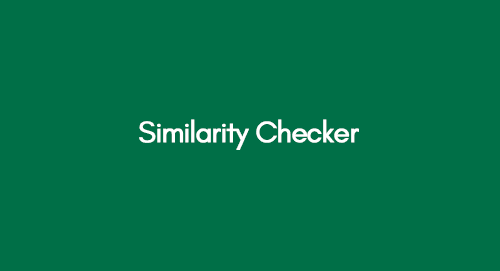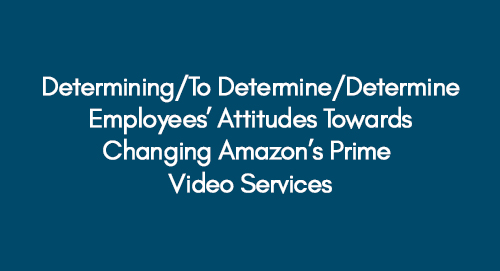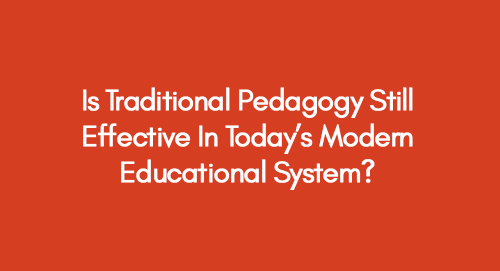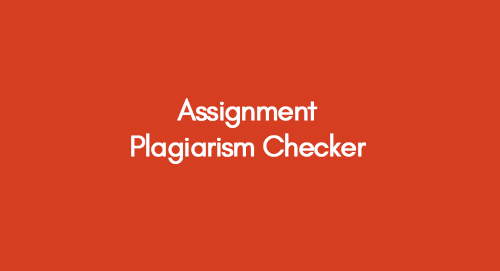
What is Annotated Bibliography? Tips and Examples
October 4, 2022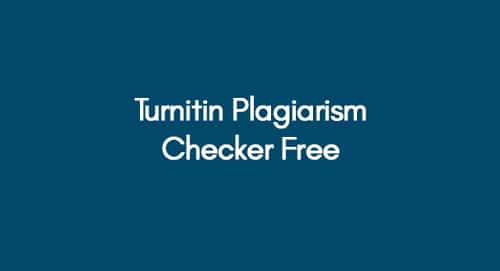
Turnitin Plagiarism Checker Free Service: Get the Plagiarism Report for Any Academic Paper Instantly
October 5, 2022Introducing our free similarity checker, the ultimate tool for maintaining academic integrity across dissertations, research papers, articles, essays, and assignments.
Introduction
As anyone who has ever written a paper knows, referencing and citing sources is an essential part of academic writing. Not only does it ensure that you are giving credit where it is due, but it also helps to prevent plagiarism. Plagiarism is the act of using someone else's words or ideas without giving them proper credit, and it can have serious consequences. In many cases, it can lead to a loss of points or even a failing grade.
Discover about Free Plagiarism Checker for Students to Find Similarities
That's why it's so important for students to use a similarity checker before they submit their work. A similarity checker allows users to scan their document for similarities to other sources. This way, they can make sure that they are properly citing their sources and avoid any accidental plagiarism. As a result, a similarity checker is an essential tool for any student who wants to do their best on their assignments.
The following paragraph is related to how the similarity checker helps students.
How can a Similarity Checker Help Students Improve Their Writing?
A similarity checker is a tool that can be used to assess the originality of a piece of writing. By comparing the text against a database of other sources, the checker can identify instances of plagiarism. This is useful for students, as it can help them to avoid unintentionally copying someone else's work. In addition, the checker can also be used to identify passages that have been paraphrased too closely. This is important because, while paraphrasing is allowed in academic writing, excessively close paraphrasing can still be considered plagiarism. By using a similarity checker, students can ensure that their writing is original and correctly citing other sources.
What are the Benefits of Using a Similarity Checker?
A similarity checker can be an incredibly useful tool for writers, students, and professionals. By identifying instances of plagiarism, it can help to ensure that all work is original. In addition, a similarity checker can also be used to check for accidental plagiarism. This can be especially helpful for students who are worried about unintentionally copying material from a source. By running their work through a similarity checker, they can rest assured that they are submitting their own original work. In addition, similarity checkers can also be used to help identify sources that may have been used without proper attribution. By identifying these instances, writers can avoid any potential issues with plagiarism. Overall, a similarity checker is a valuable tool that can help to ensure the originality of any piece of writing.
How can Students Use a Similarity Checker to Their Advantage?
A similarity checker is a valuable tool for any student who wants to avoid plagiarism. By entering a piece of text into the checker, students can quickly see how much of their work is similar to other sources. This can be useful for identifying passages that should be rewritten to avoid plagiarism. However, students should also keep in mind that some similar phrases or concepts are not always indicative of plagiarism. For example, common idioms or clichés are often used by many different authors and do not need to be cited. In addition, ideas that are widely known or commonly accepted do not need to be sourced. As long as students use their judgment and consult with their instructors when necessary, a similarity checker can be a helpful tool for avoiding plagiarism.
The following content is related to different types of similarity checkers below.
What are the Different Types of Similarity Checkers Available?
When it comes to writing, plagiarism is a serious issue. Not only can it lead to disciplinary action from your school or employer, but it can also damage your reputation as a writer. Fortunately, there are a number of ways to avoid plagiarism, and one of the most effective is to use a similarity checker. These tools are designed to scan your writing for matching content, and they can be an invaluable resource for preventing plagiarism. There are a number of different types of similarity checkers available, including paid and free versions. Paid checkers tend to be more comprehensive, but free checkers can still be effective. Ultimately, the best way to avoid plagiarism is to use your own words and ideas, but a similarity checker can be a helpful tool for ensuring that your writing is original.
Which Similarity Checker is the Best for Students?
There are many similarity checkers available online, and it can be difficult to know which one to use. For students, the most important factors to consider are accuracy and ease of use. Grammarly is a popular similarity checker that offers both a free and premium version. The free version is supported by ads, but it is still very accurate. Another option is Turnitin, which is a paid service that is often used by schools and universities. Turnitin Plagiarism Checker offers a more comprehensive report, but it can be more difficult to use. Plagiarism Checker X is another popular choice, and it offers a variety of features such as citation generation and plagiarism detection. Ultimately, the best similarity checker for students depends on their individual needs and preferences.
How can Students Make Sure They are Using a Reliable Similarity Checker?
When it comes to academic writing, plagiarism is a serious offense that can lead to serious consequences. As a result, students need to be careful to avoid accidental plagiarism and to use reliable similarity checkers when they are quoting or paraphrasing sources. There are a few key factors to consider when choosing a similarity checker. First, the checker should be accurate and up-to-date, with a database that includes all of the major scholarly journals and sources. Second, the checker should be easy to use, with a clear interface that allows students to quickly upload their documents and receive results. Finally, the checker should be affordable, since many students are working on a tight budget. By considering these factors, students can be sure that they are using a reliable similarity checker that will help them avoid accidentally plagiarizing their sources.
What are the Risks Associated with Using a Similarity Checker?
While a similarity checker can be a helpful tool for catching plagiarism, it is important to understand its limitations. First and foremost, similarity checkers are not 100% accurate. They often return false positives, flagging passages that are not actually plagiarized. This can be frustrating for students, who may waste time tracking down sources for passages that are not actually plagiarized. Additionally, similarity checkers can give students a false sense of security. Just because a passage does not show up as plagiarized does not mean that it is original work. It is still possible to paraphrase or summarize someone else's work without giving credit, and similarity checkers will not catch this type of cheating. Finally, some students may be tempted to game the system by deliberately including plagiarized passages in their papers, knowing that the similarity checker will flag them. While this may help them avoid detection in the short term, it is obviously not a sustainable strategy, and it ultimately leads to poor-quality work. For these reasons, it is important to use similarity checkers with caution and to understand their limitations.
Review how students can avoid plagiarism below.
How can Students Avoid Plagiarism When Using a Similarity Checker?
When students are writing papers, it is important to avoid plagiarism. Plagiarism is when someone takes someone else's work and passes it off as their own. This can be done intentionally or unintentionally. A similarity checker is a tool that can be used to help avoid plagiarism. This tool checks a paper for similarities to other papers. If there are similarities, the checker will flag them. The student can then go back and make sure that they have cited the source correctly. They can also make sure that they have not accidentally copied someone else's work. By using a similarity checker, students can avoid plagiarism and ensure that their papers are original.
Conclusion
In conclusion, our free similarity checker stands as an invaluable resource for students and researchers alike, offering a convenient and reliable means of ensuring the originality of their academic work. With its versatility spanning dissertations, research papers, articles, essays, and assignments, our tool caters to a wide range of academic needs, providing comprehensive plagiarism detection capabilities. By utilizing this checker, users can confidently submit their work knowing that it has undergone thorough scrutiny, thus upholding academic integrity and fostering a culture of honesty and authenticity.
Get 3+ Free Dissertation Topics within 24 hours?

















